Jump to: Best Weather in Jamaica • Rainy Season • Warmest Weather • Seasonal Weather
Nestled in the heart of the Caribbean, Jamaica is a paradise that offers more than just stunning beaches and vibrant culture. Its weather, a vital element of its charm, plays a significant role in shaping your travel experience. From the balmy breezes of winter to the lush greenery post-rainfall in summer, each season in Jamaica paints the island with a unique palette of experiences.
Whether you're planning a laid-back beach holiday, an adventurous mountain trek, or a cultural exploration, understanding the Jamaican climate will help you make the most of your trip. So, let’s dive into the rhythms of Jamaican weather, uncovering the best times to visit and the seasonal activities that make this island truly unforgettable.
Factors in Jamaica's Weather Patterns
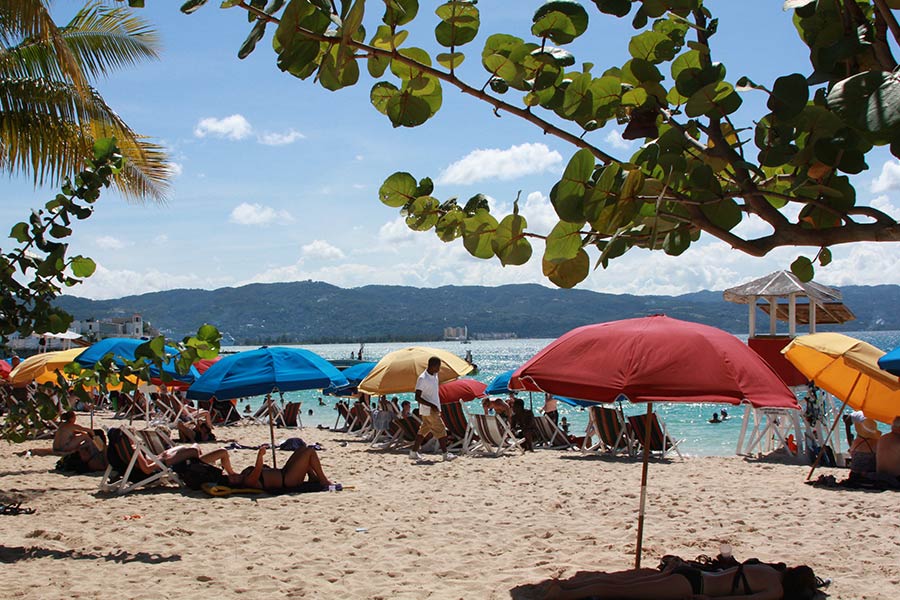 Understanding the climate in Jamaica is key for travelers who want to make the most of their trip. Let's dive into the factors that shape Jamaica's weather, so you can plan your adventure with confidence.
Understanding the climate in Jamaica is key for travelers who want to make the most of their trip. Let's dive into the factors that shape Jamaica's weather, so you can plan your adventure with confidence.
The Tropical Climate: Sun, Sea, and Breezes
First things first: Jamaica enjoys a tropical maritime climate. This means it's generally warm and sunny year-round, with temperatures averaging between 77°F (25°C) and 86°F (30°C). The island is blessed with a consistent sea breeze, which helps temper the heat, making even warm days feel comfortable.
Rainfall Patterns: Liquid Sunshine
Rain in Jamaica is often referred to as "liquid sunshine" because it tends to be short-lived and is usually followed by bright, sunny skies. The island experiences two rainy seasons: May to June and September to November. While the rain might come down heavily, it's usually over quickly, so don't let it dampen your spirits or your plans!
Hurricanes: Nature's Power
Jamaica lies within the Atlantic hurricane belt, and the hurricane season runs from June to November. The peak months are August and September. While hurricanes are powerful and can be disruptive, Jamaica has an effective system for tracking and responding to these storms. It's always wise to stay informed about the weather during your trip and heed any advice or instructions from local authorities.
The Influence of Geography
Jamaica's geography plays a big part in its weather patterns. The island's mountains, particularly the Blue Mountains, can cause a variation in rainfall. The north coast tends to receive more rain than the south coast, leading to lush, green landscapes that are a sight to behold.
The Cool Retreats: Higher Altitudes, Different Climate
If you venture into the higher altitudes, like the Blue Mountains, you'll notice a significant drop in temperature. These areas can be quite cool, especially at night, offering a pleasant contrast to the warm coastal areas.
Seasonal Changes: Subtle but Significant
While Jamaica doesn't experience dramatic seasonal changes like in temperate regions, there are subtle shifts. The winter months, December to March, are slightly cooler and are considered the peak tourist season. This is the perfect time for those who prefer milder temperatures and less rainfall.
When Is the Best Weather for Visiting Jamaica?
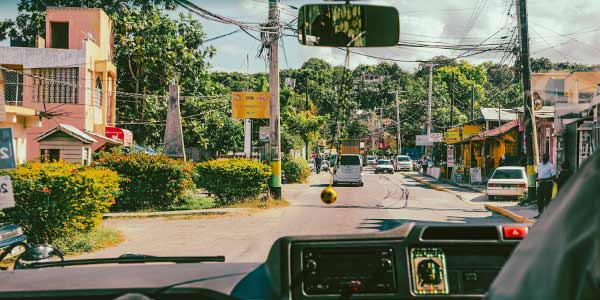 Choosing the best time to visit Jamaica depends on your weather preferences. The island is welcoming year-round, but certain months might better suit your travel style.
Choosing the best time to visit Jamaica depends on your weather preferences. The island is welcoming year-round, but certain months might better suit your travel style.
The period from mid-December to April is often seen as ideal, offering comfortable temperatures in the mid-70s to mid-80s Fahrenheit (mid-20s to low 30s Celsius), lower humidity, and minimal rainfall. This is the peak tourist season, so while the weather is delightful, it's also the busiest and most expensive time.
May to August, the summer months, bring higher temperatures and increased humidity, along with the start of the rainy season. Rain showers are usually short and refreshing, making this a great time to enjoy lush, green scenery and a more relaxed atmosphere with fewer tourists.
During the hurricane season from June to November, weather can be unpredictable, but severe storms are rare and usually forecasted well in advance. This period offers quieter and more budget-friendly travel opportunities, ideal for flexible travelers.
Late November and early December provide a balance with relatively dry and less humid conditions, and fewer tourists before the high season begins.
Ultimately, the best time to visit Jamaica depends on whether you prefer perfect beach weather, lush landscapes, a quiet getaway, or budget-friendly travel. Each season in Jamaica has its unique charm, blending beautiful weather with the island's vibrant culture and warm hospitality.
When Is the Rainy Season in Jamaica?
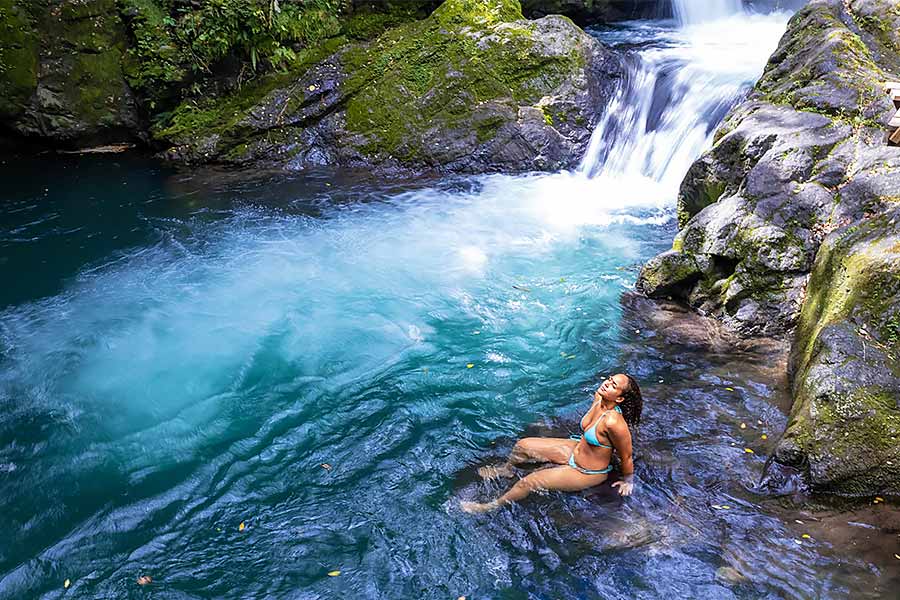 Understanding the rainy season in Jamaica is crucial for travelers planning their trip. The island experiences two primary rainy seasons, which are distinct but relatively mild compared to many other tropical regions.
Understanding the rainy season in Jamaica is crucial for travelers planning their trip. The island experiences two primary rainy seasons, which are distinct but relatively mild compared to many other tropical regions.
The First Rainy Season: May to June
The initial rainy season occurs from May to June. During these months, you can expect brief but heavy showers, typically in the afternoon or evening. The rain is often interspersed with periods of sunshine, a pattern that leads to the lush and vibrant landscapes Jamaica is famous for. The temperatures remain warm, making it a pleasant time for those who don't mind occasional rain.
The Second Rainy Season: September to November
The second and more pronounced rainy season stretches from September to November. This period can see more consistent rainfall, and it coincides with the Atlantic hurricane season. While hurricanes are not a daily threat, it's important to be aware of the weather forecasts if you're traveling during this time. Like the earlier rainy season, the showers are usually short-lived and followed by sunshine.
What to Expect in the Rainy Season
Rainfall in Jamaica does not typically disrupt activities for long. The island's infrastructure and the resilience of its people mean that life goes on, rain or shine. The rainforests and mountains get a fresh, green glow, and the waterfalls and rivers become more spectacular. For many, this is a magical time to experience the island's natural beauty at its peak.
Travel Tips During the Rainy Season
- Flexible Planning: Have a flexible itinerary that allows for changes due to weather.
- Rain Gear: Pack lightweight rain gear, such as a waterproof jacket or an umbrella.
- Stay Informed: Keep an eye on local weather forecasts and heed any advice from local authorities, especially during the hurricane season.
- Enjoy Indoor Activities: Explore Jamaica's rich indoor offerings, like its museums, galleries, and culinary scene, when outdoor plans are hindered by rain.
What Time of Year is Warmest in Jamaica?
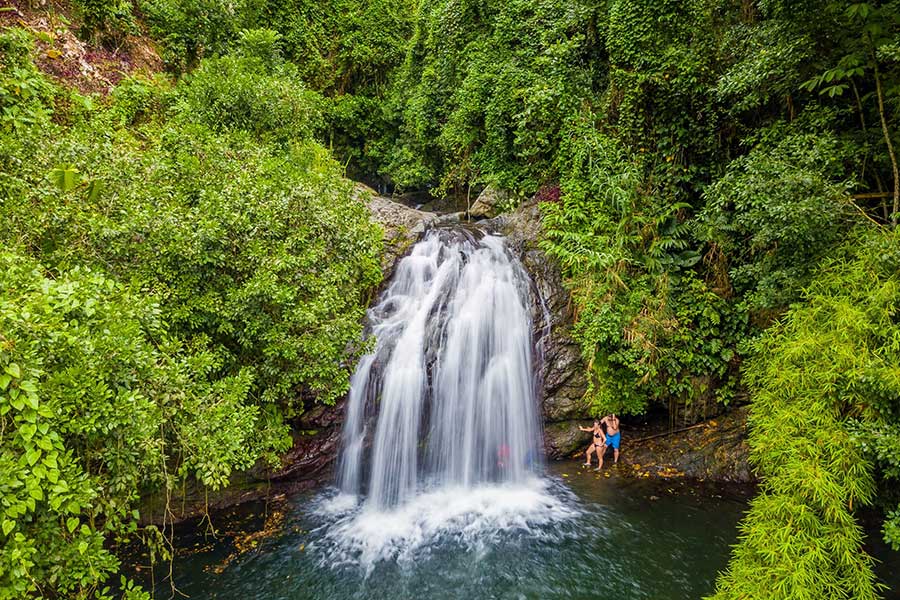 Jamaica, with its tropical climate, enjoys warm temperatures year-round, but certain months are notably hotter.
Jamaica, with its tropical climate, enjoys warm temperatures year-round, but certain months are notably hotter.
Peak Warmth: July and August
The warmest months in Jamaica are typically July and August. During these summer months, daytime temperatures often soar into the high 80s to low 90s Fahrenheit (around 30-33 Celsius). The heat is accompanied by higher humidity, making it feel even warmer. These months are perfect for those who love basking in the sun and enjoying the vibrant summer energy of the island.
Mild Warmth: May to September
The period extending from May through September generally sees warmer temperatures compared to the rest of the year. While the heat is more pronounced in July and August, the surrounding months also offer plenty of warmth, with temperatures comfortably in the mid to high 80s Fahrenheit (around 27-30 Celsius).
Evening Temperatures
Even during the warmest months, evenings in Jamaica tend to be milder. Coastal breezes often bring relief from the daytime heat, making evenings pleasant for beach walks, outdoor dining, and experiencing the island's nightlife.
Travel Considerations During Warmer Months
- Stay Hydrated: It's important to drink plenty of water to stay hydrated in the heat.
- Sun Protection: Don't forget to pack sunscreen, hats, and sunglasses to protect yourself from the strong tropical sun.
- Choose Comfortable Accommodations: Consider accommodations with air conditioning or good ventilation for a comfortable stay.
- Enjoy Water Activities: This is an ideal time to indulge in water-based activities like swimming, snorkeling, or boat tours to cool off.
Seasonal Weather in Jamaica
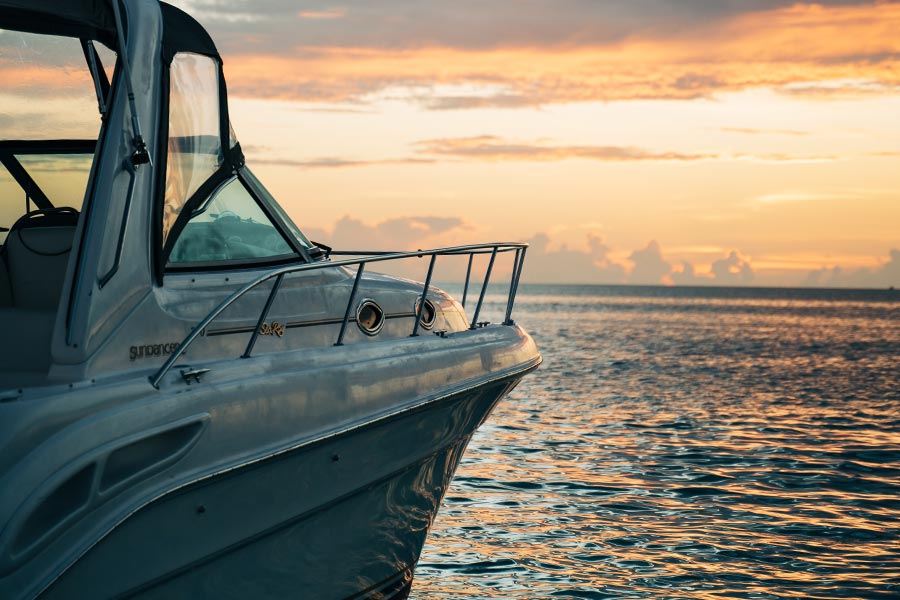 Jamaica's tropical climate means the island is a fantastic year-round destination, but each season offers unique experiences. Understanding the seasonal weather can help you plan the perfect trip, whether you're looking for sunny beach days, lush natural explorations, or cultural experiences.
Jamaica's tropical climate means the island is a fantastic year-round destination, but each season offers unique experiences. Understanding the seasonal weather can help you plan the perfect trip, whether you're looking for sunny beach days, lush natural explorations, or cultural experiences.
Winter in Jamaica: December - February
Winter in Jamaica is characterized by milder temperatures and less rainfall. Daytime temperatures average in the mid-70s to low 80s Fahrenheit (mid-20s Celsius). This is the peak tourist season, thanks to the comfortable weather.
Tours and Excursions
- Beach Excursions: Ideal time for beach activities, with comfortable sunbathing conditions.
- Cultural Tours: Explore cultural landmarks in comfortable weather, perfect for city tours and visiting historical sites.
- Nature Hikes: Enjoy hiking and biking in the Blue Mountains, with clearer skies and cooler temperatures.
Spring in Jamaica: March - May
Spring sees a gradual increase in temperature, with occasional rain showers. It's a vibrant time as the island's flora begins to bloom.
Tours and Excursions
- Garden Tours: Visit botanical gardens to see Jamaica's flora in full bloom.
- Waterfall Excursions: Ideal for visiting waterfalls like Dunn's River Falls, which are particularly spectacular after the rain.
- Wildlife Watching: Great for bird watching and wildlife tours, as nature is particularly active.
Summer in Jamaica: June - August
Summer is the hottest season, with temperatures often in the high 80s to low 90s Fahrenheit (30-33 Celsius). This period also marks the beginning of the rainy season, with short, intense showers.
Tours and Excursions
- Water Sports: Take advantage of the warm sea temperatures for snorkeling, scuba diving, and boat tours.
- Festivals: Experience local festivals and cultural events, which are abundant during summer.
- Mountain Retreats: Escape the heat by visiting cooler mountain areas, perfect for eco-tours and coffee plantation visits.
Fall in Jamaica: September - November
Fall is characterized by more consistent rainfall and is part of the hurricane season. However, severe weather is not a daily occurrence and temperatures remain warm.
Tours and Excursions
- Surfing and Kiteboarding: Take advantage of the post-summer waves on the coast.
- Culinary Tours: Explore Jamaica's culinary scene, as the fall is less crowded, offering a more authentic experience.
- Indoor Cultural Activities: Visit museums and art galleries for a rich cultural experience, ideal for rainy days.
Plan Your Jamaican Adventure
As we wrap up our journey through Jamaica's diverse and enchanting weather patterns, it's clear that this island offers a rich tapestry of experiences all year round. Whether you find joy in soaking up the winter sun, dancing in the summer rain, exploring the vibrant spring landscapes, or embracing the tranquility of fall, Jamaica has something special in store for every traveler.
Remember, the best time to visit Jamaica is whenever you can experience the island in a way that resonates with you. Each season brings its unique flavor, activities, and memories waiting to be made. So pack your bags, prepare for an adventure, and let Jamaica's weather guide you to an unforgettable vacation. Happy travels, and we hope this guide helps you plan your perfect Jamaican getaway!
All of our content at Caribbean Tourbase is written by experienced travel writers who have visited all of the locations we recommend. And our review board of local tourism experts ensure that all the information we provide is accurate, current and helpful